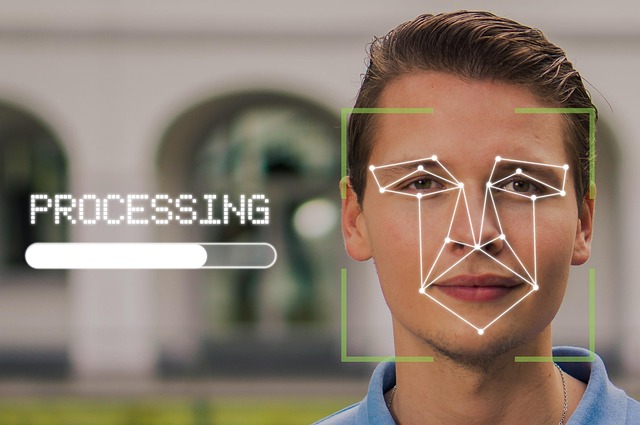In the delicate early moments after birth, the health and stability of a newborn hinge on constant observation and swift intervention. Traditional methods of monitoring rely on periodic vital checks by staff, a practice that, while effective, can miss subtle changes between assessments. Sensor-driven health innovations are reshaping this landscape, providing continuous, non‑invasive data streams that empower caregivers to detect and respond to conditions in real time. The convergence of miniaturized sensors, advanced analytics, and seamless connectivity is creating a new standard for neonatal care that promises safer outcomes and greater parental peace of mind.
Continuous Vital Sign Monitoring: From Point Checks to 24/7 Insight
One of the most significant breakthroughs has been the transition from sporadic vital sign measurements to continuous, high‑frequency monitoring. Wearable patches equipped with photoplethysmography, pulse oximetry, and respiratory sensors can be applied directly to the infant’s skin without impeding comfort or growth. These devices transmit data via low‑power Bluetooth or Wi‑Fi to a central dashboard that alerts clinicians to deviations in heart rate, oxygen saturation, or breathing patterns within seconds.
- Early detection of apnea: Sensors can identify brief pauses in breathing that might otherwise go unnoticed until they become severe.
- Trend analysis: Continuous data allow for the observation of subtle shifts, such as a gradual rise in temperature that could indicate infection.
- Reduced workload: Automated alerts free nurses from repetitive manual checks, enabling them to focus on hands‑on care.
Smart Algorithms and Predictive Analytics
Raw sensor data alone only become actionable when interpreted through sophisticated algorithms. Machine‑learning models trained on thousands of neonatal cases can differentiate between benign variations and clinically significant anomalies. By integrating demographic information (gestational age, birth weight) with real‑time vitals, these systems generate risk scores that help prioritize interventions.
“The integration of predictive analytics transforms sensor data from a mere collection of numbers into a living, breathing assessment tool,” notes a leading neonatal researcher.
Non‑Invasive Growth and Development Tracking
Monitoring growth is a cornerstone of neonatal care, yet traditional measurements—weight, length, head circumference—require manual handling and can be stressful for the infant. New optical sensors and structured light scanning technologies offer a gentler alternative. By capturing high‑resolution images and applying computer vision algorithms, these devices can measure key anthropometric parameters without physical contact.
Benefits include:
- Precision: High‑resolution imaging reduces measurement error compared to manual tape measurements.
- Frequency: Measurements can be taken at any time, providing up‑to‑date growth curves.
- Integration: Growth data automatically feed into electronic health records, ensuring continuity across care teams.
Parental Involvement Through Mobile Interfaces
Modern sensor systems are not confined to hospital walls. Many platforms now include secure mobile applications that allow parents to view their child’s vital trends in real time. Features such as alerts for abnormal readings, educational prompts, and historical trend graphs help parents become active participants in their infant’s health journey.
By fostering transparency and education, these apps reduce parental anxiety and encourage timely communication with healthcare providers.
Enhancing Infection Control and Hygiene
In neonatal intensive care units (NICUs), infection control is paramount. Sensor‑driven innovations help maintain optimal environmental conditions and monitor equipment usage. For example, RFID‑based tracking of reusable monitors ensures that each device is sterilized before contact with a new infant. Ambient sensors measure temperature, humidity, and air quality, alerting staff when conditions drift toward thresholds that could increase infection risk.
Such systems not only protect infants but also streamline compliance with regulatory standards.
Future Horizons: Integration of Genomic and Metabolic Sensors
While current sensor technologies focus primarily on physiological vitals, emerging research is exploring the integration of genomic and metabolic monitoring. Miniaturized biosensors capable of detecting specific biomarkers in sweat or interstitial fluid could offer early warnings of metabolic disorders, sepsis, or congenital heart defects. Coupled with continuous vital monitoring, these multimodal data streams could usher in an era of truly personalized neonatal care.
Challenges and Considerations in Sensor Adoption
Despite their promise, sensor‑driven systems must navigate several hurdles before becoming ubiquitous in newborn care:
- Data privacy and security: Protecting sensitive infant health data requires robust encryption and access controls.
- Device durability: Sensors must withstand frequent cleaning cycles and the harsh environment of NICUs.
- Clinical validation: Extensive trials are necessary to confirm that sensor readings correlate reliably with gold‑standard measurements.
- Cost and reimbursement: High upfront costs and unclear reimbursement pathways can slow adoption in resource‑limited settings.
Ethical Implications of Continuous Monitoring
Continuous data collection raises ethical questions about the balance between medical benefit and potential intrusion. Clear policies regarding data ownership, retention periods, and usage for research must accompany any sensor deployment. Engaging parents and caregivers in the decision‑making process ensures that the system respects family values while advancing clinical care.
Conclusion: A New Dawn for the Newborn Period
Sensor‑driven health innovations are redefining the newborn period, shifting care from reactive to proactive, from intermittent observation to continuous stewardship. By providing real‑time, non‑invasive insights into vital signs, growth trajectories, and environmental factors, these technologies empower clinicians to intervene precisely when and where it matters most. At the same time, they invite parents into the care loop, fostering shared responsibility and confidence.
As the field advances, the integration of predictive analytics, genomics, and seamless connectivity will likely deepen the granularity of newborn monitoring. While challenges in privacy, cost, and clinical validation remain, the trajectory points toward a future where every infant receives the safest, most responsive care possible—right from the first breath to the first milestone.


